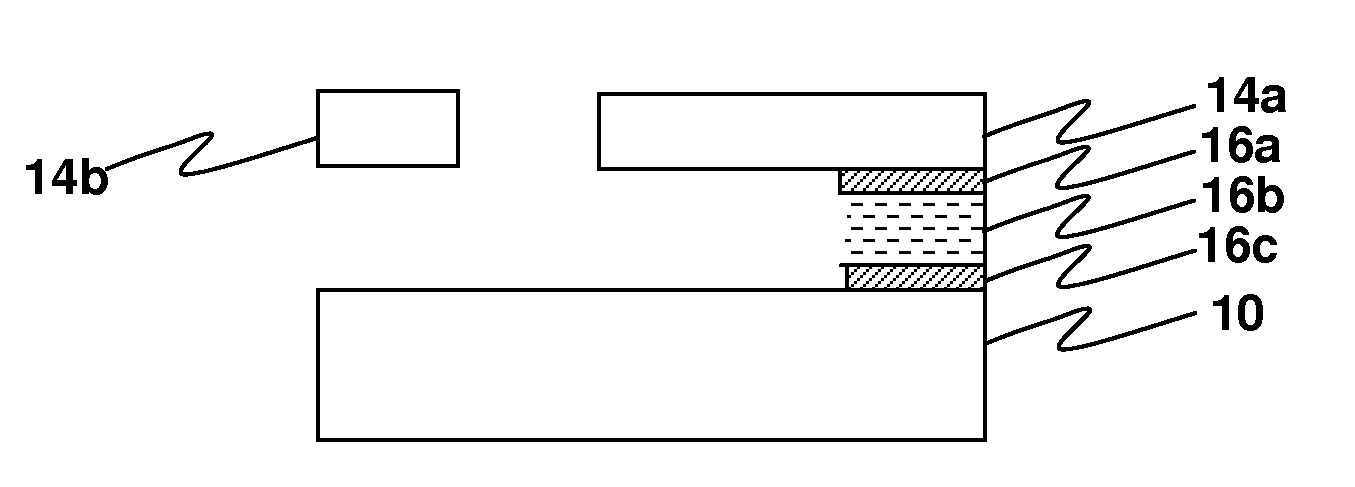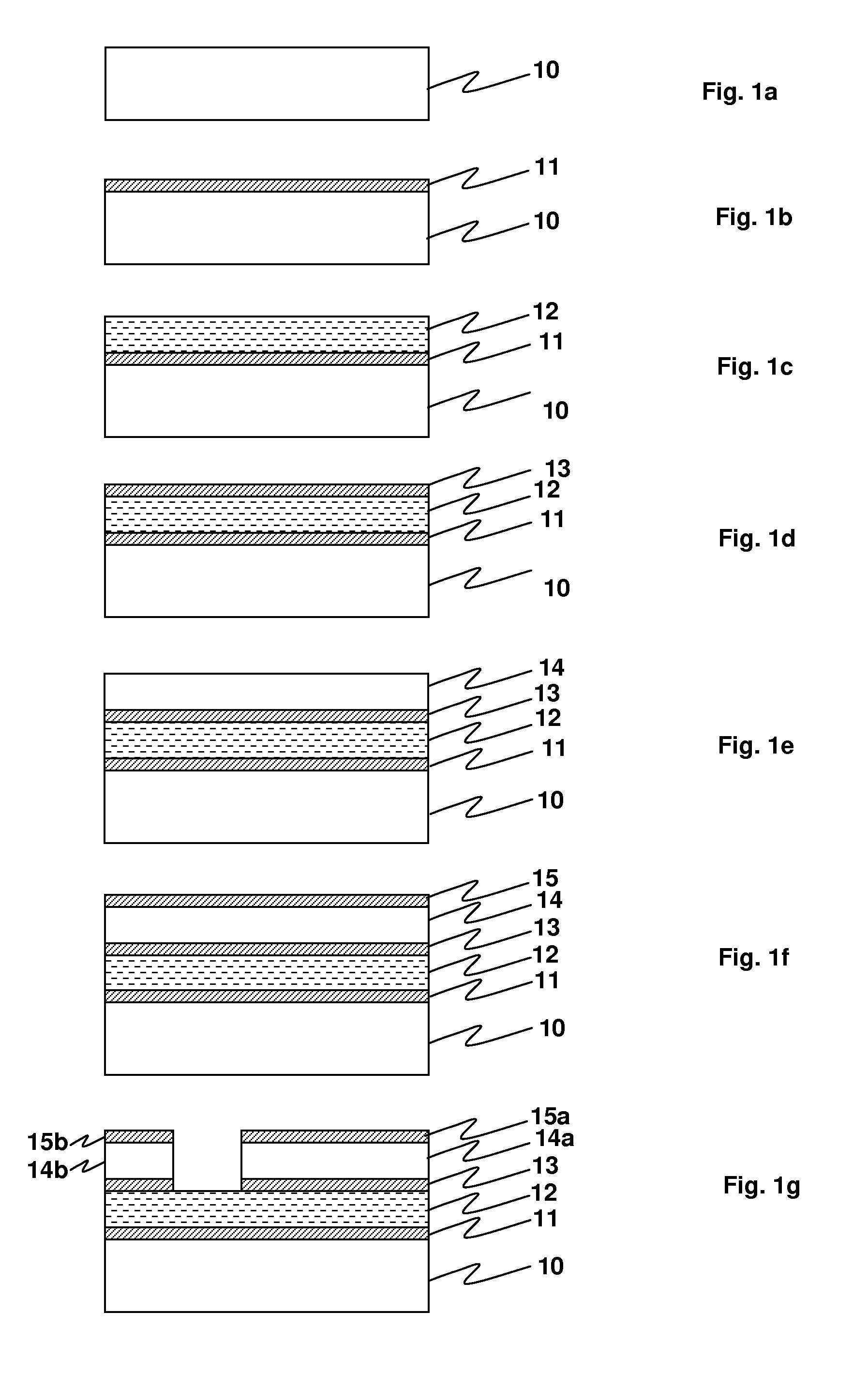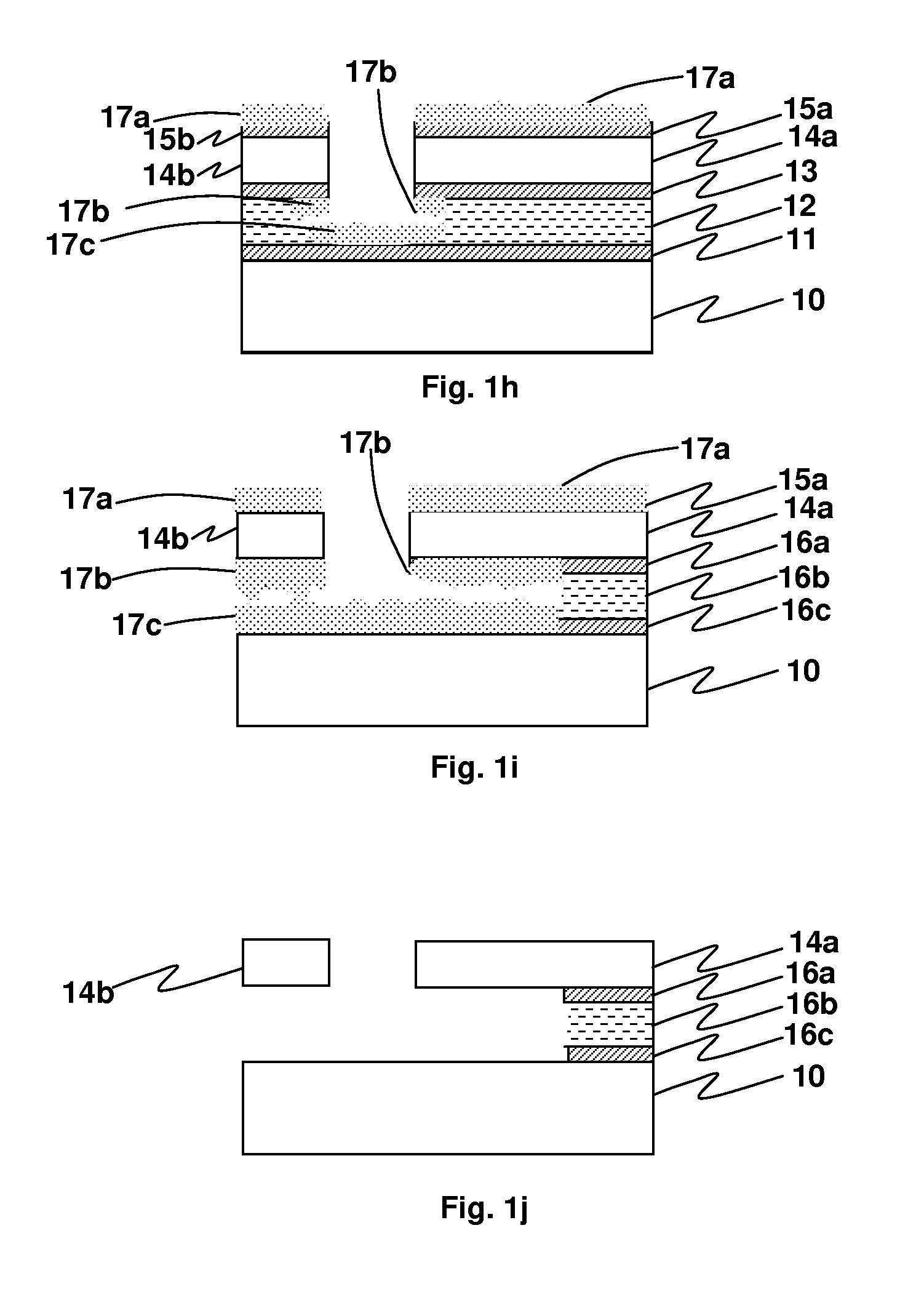Process for manufacturing electro-mechanical systems
a manufacturing process and electromechanical technology, applied in the direction of electrical transducers, coatings, microstructure devices, etc., can solve the problem of limitation of water reduction to a level that prevents stiction
- Summary
- Abstract
- Description
- Claims
- Application Information
AI Technical Summary
Benefits of technology
Problems solved by technology
Method used
Image
Examples
Embodiment Construction
[0018]While a few embodiments of the NEMS aspect of the invention are illustrated in detail below, it should be and will be understood by those skilled in this art that the invention also applies to other microelectromechanical systems (MEMS) as well as nanoelectro mechanical systems (NEMS) since the problems of avoiding stiction during release via VHF and preventing movement of device members such as beams, springs, and the like during processing steps applies to both formats.
[0019]Referring first to FIGS. 1a-1j, an embodiment of an process according to the invention is illustrated wherein an NEMS stack is built and ultimately released in a series of steps. The starting substrate 10 is illustrated in FIG. 1a. One or more silicon nitride layers are deposited, depending on the embodiment. FIG. 1b illustrates a first silicon nitride layer 11, followed by deposit of a sacrificial oxide layer 12 (FIG. 1c), an intermediate silicon nitride layer 13 (FIG. 1d), a structure or device layer 1...
PUM
| Property | Measurement | Unit |
|---|---|---|
| thick | aaaaa | aaaaa |
| thick | aaaaa | aaaaa |
| thickness | aaaaa | aaaaa |
Abstract
Description
Claims
Application Information
 Login to View More
Login to View More - R&D
- Intellectual Property
- Life Sciences
- Materials
- Tech Scout
- Unparalleled Data Quality
- Higher Quality Content
- 60% Fewer Hallucinations
Browse by: Latest US Patents, China's latest patents, Technical Efficacy Thesaurus, Application Domain, Technology Topic, Popular Technical Reports.
© 2025 PatSnap. All rights reserved.Legal|Privacy policy|Modern Slavery Act Transparency Statement|Sitemap|About US| Contact US: help@patsnap.com



